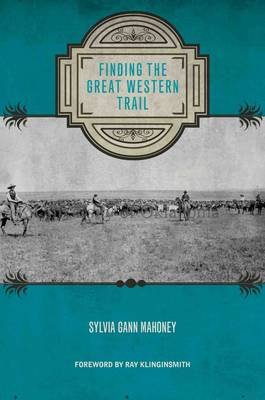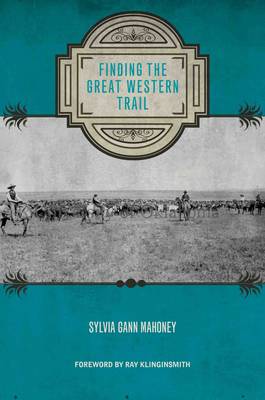
- Afhalen na 1 uur in een winkel met voorraad
- Gratis thuislevering in België vanaf € 30
- Ruim aanbod met 7 miljoen producten
- Afhalen na 1 uur in een winkel met voorraad
- Gratis thuislevering in België vanaf € 30
- Ruim aanbod met 7 miljoen producten
Zoeken
Omschrijving
The Great Western Trail (GWT) is a nineteenth-century cattle trail that originated in Northern Mexico, ran west parallel to the Chisholm Trail, traversed the United States for some two thousand miles, and terminated after crossing the Canadian border. Yet through time, misinformation, and the perpetuation of error, the historic path of this once-crucial cattle trail has been lost. Finding the Great Western Trail documents the first multi-community effort made to recover evidence and verify the route of the Great Western Trail.
The GWT had long been celebrated in two neighboring communities: Vernon, Texas, and Altus, Oklahoma. Separated by the Red River, a natural border that cattle trail drovers forded with their herds, both Vernon and Altus maintained a living trail history with exhibits at local museums, annual trail-related events, ongoing narratives from local descendants of drovers, and historical monuments and structures. So when Western Trail Historical Society members in Altus challenged the Vernon Rotary Club to mark the trail across Texas every six miles, the effort soon spread along the trail, in part through Rotary networks, from Mexico, across nine US states, and into Saskatchewan, Canada.
This book is the story of finding and marking the trail, and it stands as a record of each community's efforts to uncover their own local history. What began as bravado transformed into a grassroots project that, one hopes, will bring the previously obscured history of the Great Western Trail to light.
The GWT had long been celebrated in two neighboring communities: Vernon, Texas, and Altus, Oklahoma. Separated by the Red River, a natural border that cattle trail drovers forded with their herds, both Vernon and Altus maintained a living trail history with exhibits at local museums, annual trail-related events, ongoing narratives from local descendants of drovers, and historical monuments and structures. So when Western Trail Historical Society members in Altus challenged the Vernon Rotary Club to mark the trail across Texas every six miles, the effort soon spread along the trail, in part through Rotary networks, from Mexico, across nine US states, and into Saskatchewan, Canada.
This book is the story of finding and marking the trail, and it stands as a record of each community's efforts to uncover their own local history. What began as bravado transformed into a grassroots project that, one hopes, will bring the previously obscured history of the Great Western Trail to light.
Specificaties
Betrokkenen
- Auteur(s):
- Uitgeverij:
Inhoud
- Aantal bladzijden:
- 304
- Taal:
- Engels
- Reeks:
Eigenschappen
- Productcode (EAN):
- 9780896729438
- Verschijningsdatum:
- 15/10/2015
- Uitvoering:
- Hardcover
- Formaat:
- Genaaid
- Afmetingen:
- 163 mm x 234 mm
- Gewicht:
- 589 g

Alleen bij Standaard Boekhandel
+ 96 punten op je klantenkaart van Standaard Boekhandel
Beoordelingen
We publiceren alleen reviews die voldoen aan de voorwaarden voor reviews. Bekijk onze voorwaarden voor reviews.








